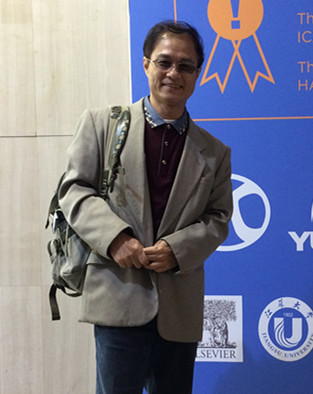Day 1 :
Keynote Forum
Xiang Li
Abbott Nutritional Research and Development, Singapore
Keynote: The role of milk protein and vegetable protein in nutritional supplement powders during microencapsulation processing
Time : 10:30-11:10

Biography:
Abstract:
Keynote Forum
Meera Srivastava
Govt. Dungar College, India
Keynote: Food and environment safety: Pesticides vs botanicals
Time : 11:30-12:10

Biography:
Abstract:
- Special Session
Location: Las Vegas
Session Introduction
P J Miranda
ST Equipment & Technology LLC,101 Hampton Avenue, Needham MA 02494 USA
Title: Benefication of industrial materials using a tribo-electric belt separator
Time : 12:10-12:55

Biography:
Abstract:
James B Stukes
S C State University, USA
Title: Major Foodborne Illnesses: Causes and Effects.
Time : 14:00-14:45

Biography:
Abstract:
TBA
- Oral Session
Location: Las Vegas
Session Introduction
Will Polese
Markets and Markets, USA
Title: Food processing, safety and technology: Trends, drivers and market forecast
Time : 14:45-15:10
Biography:
TBA
Abstract:
Ashley Evans Knowell
South Carolina State University, USA
Title: Analyzing the role of high pro-inflammatory diets and childhood obesity in the risk of adult carcinogenesis in South Carolinian children
Time : 15:10-15:35
Biography:
Abstract:
Melinda Nagy
University of Agricultural Sciences and Veterinary Medicine of Cluj-Napoca (USAMV), Romania
Title: Utilization of brewer’s spent grain and mushrooms in fortification of smoked sausages
Time : 15:35-16:00
Biography:
TBA
Abstract:
TBA
Lorena Espitia Villanueva
University of Guanajuato, México
Title: β-lactoglobulin isolation from wpc and evaluation of its surfactant properties
Time : 16:20-16:45
Biography:
Abstract:
Amegovu Kiri Andrew
University of Juba College of Applied &Industrial Sciences, South Sudan
Title: Food loss and food waste: Identification of extent, causes and prevention of food losses and waste
Time : 16:45-17:10
Biography:
Abstract:
- Keynote Forum
Location: Las Vegas
Session Introduction
Frank G F Qin
Donguang University of Technology, China
Title: A parallel study of freeze concentration and vacuum evaporating concentration of apple juice
Time : 10:10-10:50

Biography:
Abstract:
P J Miranda
ST Equipment and Technology, USA
Title: Changing the culture with my personal and professional experiences in metallurgy and food separation industries
Time : 11:10-11:50

Biography:
Abstract:
- Oral Session
Location: Las Vegas
Session Introduction
James B Stukes
S.C. State University, USA
Title: The determination of aflatoxin levels of unprocessed and processed peanuts
Time : 11:50-12:15
Biography:
Abstract:
Donald J Wagner
Technical market manager Gelest Inc., USA
Title: Novel antimicrobial polymer receives epa registration and nsf 51 for food contact substrates
Time : 12:15-12:40
Biography:
Abstract:
Jory D Lange
Robins Cloud LLP, USA
Title: Blockchain: Accelerating traceback investigations in food poisoning outbreaks
Time : 12:40-13:05
Biography:
Abstract:
Asing
University of Malaya, Malaysia
Title: A novel DNA marker for the quantitative detection of malayan box turtle (cuora amboinensis) materials in commercial food chain and chinese herbal food products
Time : 13:05-13:30
Biography:
Abstract:
Moawiya Haddad
Al-Balqa Applied University, Jordan
Title: Microbiological quality of soft white cheese produced traditionally in jordan
Time : 15:10-15:35
Biography:
Abstract:
Nepal C Dey
Research and Evaluation Division BRAC, Bangladesh
Title: Safety of food: hand washing with soap at rural households of Bangladesh
Time : 15:35-16:00
